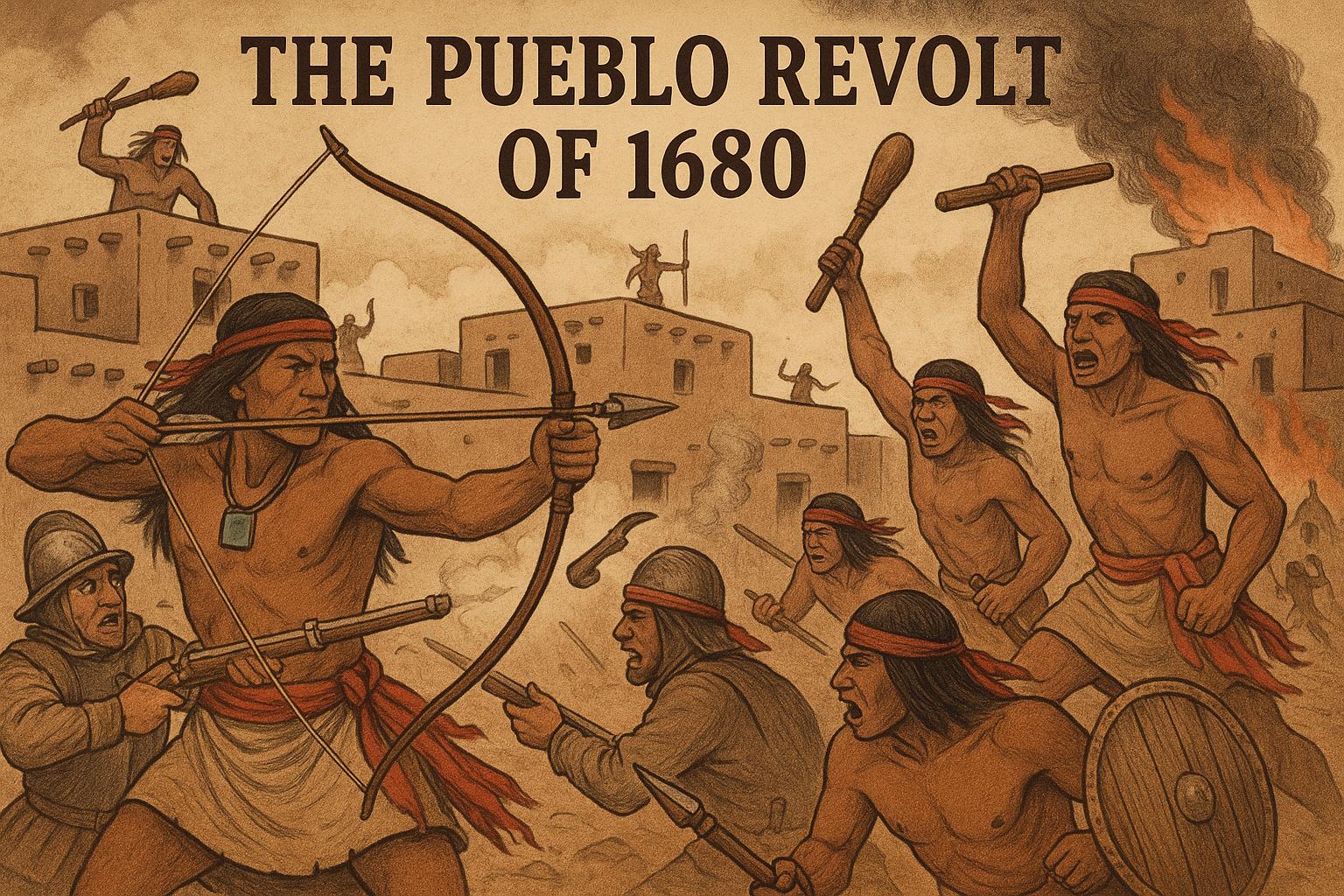The Historical Context of the Pueblo Revolt of 1680
The Pueblo Revolt of 1680 stands as a significant episode in the history of what is now the southwestern United States. It was a response by indigenous Pueblo peoples against Spanish colonial forces and marked a pivotal moment in the relationship between European colonizers and Native American groups. This insurrection was motivated by a multitude of factors, including oppressive colonial practices, cultural suppression, and the imposition of new religious beliefs.
Origins and Causes
The roots of the Pueblo Revolt can be traced back to decades of Spanish colonization in the region. Spanish settlers, who arrived in the mid-16th century, sought to expand their territory and influence through a combination of encomienda systems and missionary efforts. The encomienda system required Native Americans to provide labor and tribute to Spanish landowners, often under harsh conditions. Meanwhile, Franciscan missionaries worked to convert the indigenous populations to Christianity, frequently forbidding traditional religious practices and ceremonies that were vital to the cultural and spiritual life of the Pueblo peoples.
In the early stages of colonization, the Spanish strategies focused heavily on both control and conversion. However, this led to profound disruptions within the Pueblo communities. The Pueblos were forced to adapt not only to a new political structure but also to the loss of their spiritual autonomy. The Spanish attempts to dismantle traditional systems of governance and religious practice met with resistance from the start but took an organized form leading up to the revolt.
Tensions escalated as these policies disrupted the fabric of Pueblo society. By the late 17th century, additional pressures, such as drought and disease, further exacerbated these stresses, intensifying the desire for change. The survival of traditional ways of life and the physical survival of the Pueblo people became intertwined challenges, pushing the communities to action. The Pueblos, resilient and motivated to preserve their cultural identity, sought a way to resist the Spanish encroachment effectively.
The Role of Leaders and Planning
The leadership of the revolt was essential in bringing together various Pueblo groups to act in unison. A key figure in this movement was a Tewa religious leader named Popé. His role was paramount in unifying different tribes and instilling in them a vision of resistance. Under his leadership, the Pueblos coordinated a unified uprising aimed at expelling the Spanish from their lands, representing a unique moment when disparate groups came together for a common cause.
The insurgency was meticulously planned, demonstrating the strategic acumen of the Pueblo leaders. Historical sources indicate that the Pueblos used a system of knotted cords as a calendar to synchronize their efforts and communicate across distances. This method, showcasing the intersection of cultural knowledge and tactical need, allowed for an unprecedented level of coordination among the tribal communities involved in the revolt.
When the revolt finally erupted on August 10, 1680, it was the result of intricate organization and commitment to their objectives. The well-coordinated attack struck Spanish settlements and missions, dismantling symbols of colonial dominance in a swift series of actions. This strategic strike took the Spanish by surprise, revealing the effectiveness of the planning and leadership of Popé and his contemporaries.
The Course of the Revolt
Once the rebellion began, the Pueblos demonstrated remarkable coordination and determination. The initial assaults against the Spanish invaders were vigorous and effective. Within days, the Pueblos managed to drive the Spanish forces out of Santa Fe, the colonial capital, and most other settlements. This expulsion was not only a military success but also a significant cultural victory, allowing the Pueblo peoples to reclaim their territories temporarily.
Spanish settlers and missionaries who were unable to flee faced death or captivity. These decisive actions communicated a clear message to the colonizers about the Pueblos’ determination to assert their agency and autonomy. The absence of Spanish control during this period was utilized by the Pueblos to restore their cultural norms and practices, reversing the suppressions imposed by colonial rule.
However, sustaining this newfound autonomy was challenging. The revolt had set into motion a re-evaluation of indigenous resistance dynamics and Spanish colonial approaches, laying groundwork for future interactions. The Pueblos gained a temporary respite from colonial encroachments, which allowed them to strengthen internal social structures and redefine their cultural identity in a relatively unfettered environment.
The Aftermath and Legacy
Despite the initial success of the revolt, the Spanish eventually returned in 1692. Governor Diego de Vargas led a calculated military campaign to reconquer the territory, aiming to re-establish Spanish authority over the restless and resistant region. This campaign culminated with a relatively peaceful reoccupation of Santa Fe, yet the dynamics had subtly shifted from the past interactions.
During this second phase of colonization, there was a measured shift towards accommodating some Pueblo cultural practices, as the Spanish acknowledged the resilience and importance of indigenous customs to maintaining stable governance. Facilitating certain concessions allowed the Spanish to maintain a foothold while minimizing potential insurgencies in the future.
The Pueblo Revolt of 1680 remains a critical event for understanding the dynamics of colonialism and resistance in North America. It underscores the determination of Indigenous peoples to defend their autonomy and cultural identity against foreign domination. The legacy of the revolt is reflected in the subsequent evolution of Spanish colonial policies, which had to account for and integrate indigenous agency and customs more comprehensively than before.
The Pueblo Revolt not only shaped the socio-political landscape of the time but also laid a foundation for subsequent movements of resistance. It reminded colonizers of the resilience and strength inherent within the indigenous populations of North America and highlighted the complexities of colonial rule on foreign lands.
For further reading on the Pueblo Revolt and related topics, consider exploring scholarly resources or visiting historical archives that offer deeper insights into this complex episode in history. Such resources can provide broader perspectives on both immediate impacts and long-lasting influences, illustrating how this historical event continues to resonate in understandings of colonial interactions and indigenous persistence.

